Aliens making dinner with a solar cooker? Laser beams aimed at hapless earthlings? Whatever can that – now those – bright spots on Ceres be? The most recent images taken by the Dawn spacecraft now reveal that the bright pimple has a companion spot. Both are tucked inside a substantial crater and seem to glow with an intensity out of proportion to the otherwise dark and dusky surrounding landscape.“The brightest spot continues to be too small to resolve with our camera, but despite its size it is brighter than anything else on Ceres,” said Andreas Nathues, lead investigator for the framing camera team at the Max Planck Institute for Solar System Research, Gottingen, Germany. “This is truly unexpected and still a mystery to us.”
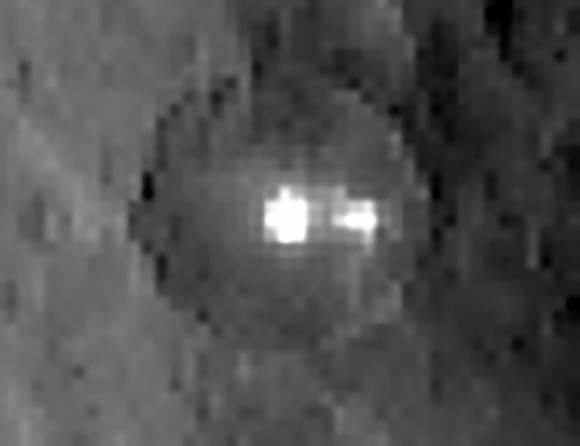
It’s a mystery bound to stir fresh waves of online speculative pseudoscience. The hucksters better get moving. Dawn is fewer than 29,000 miles (46,000 km) away and closing fast. On March 6 it will be captured by Ceres gravity and begin orbiting the dwarf planet for a year or more. Like waking up and rubbing the sleep from your eyes, our view of Ceres and its enigmatic “twin glows” will become increasingly clear in about six weeks.
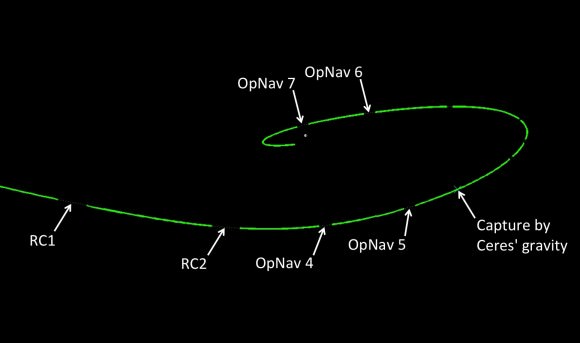
Why not March 6th when it enters orbit? Momentum is temporarily carrying the probe beyond Ceres. Only after a series of balletic moves to reshape its orbit to match that of Ceres will it be able to return more detailed images. You’ll recall that Rosetta did the same before finally settling into orbit around Comet 67P.
Closest approach occurred on Feb. 23 at 24,000 miles (38,600 km); at the moment the spacecraft is moving beyond Ceres at the very relaxed rate of 35 mph (55 kph).
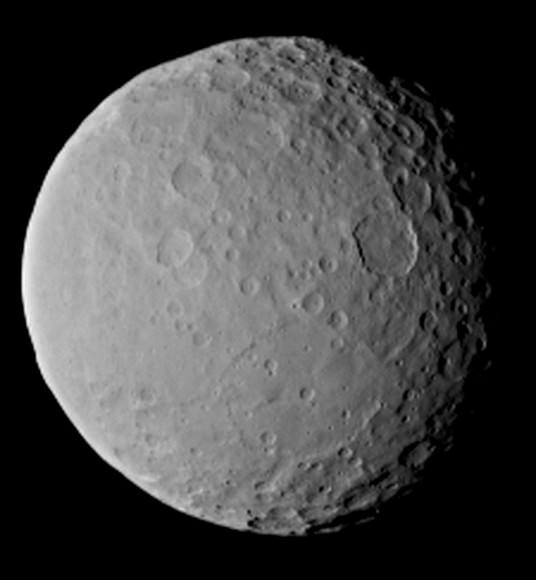
We do know that unlike Dawn’s first target, the asteroid Vesta, Ceres is rich in water ice. It’s thought that it possesses a mantle of ice and possibly even ice on its surface. In January 2014, ESA’s orbiting Herschel infrared observatory detected water vapor given off by the dwarf planet. Clays have been identified in its crust as well, making Ceres unique compared to many asteroids in the main belt that orbit between Mars and Jupiter.
Given the evidence for H20, we could be seeing ice reflecting sunlight possibly from a recent impact that exposed new material beneath the asteroid’s space-weathered skin. If so, it’s odd that the spot should be almost perfectly centered in the crater.
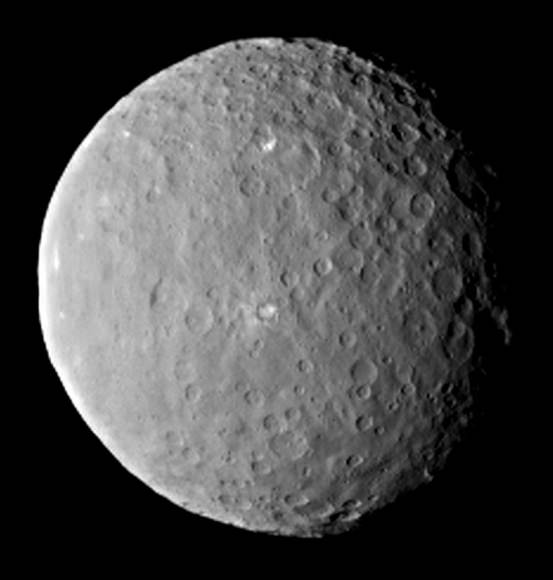
Chris Russell, principal investigator for the Dawn mission, offers another possible scenario, where the bright spots “may be pointing to a volcano-like origin.” Might icy volcanism in the form of cryovolcanoes have created the dual white spots? Or is the white material fresh, pale-colored rock either erupted from below or exposed by a recent impact? Ceres is a very dark world with an albedo or reflectivity even less than our asphalt-dark Moon. Freshly exposed rock or ice might stand out starkly.
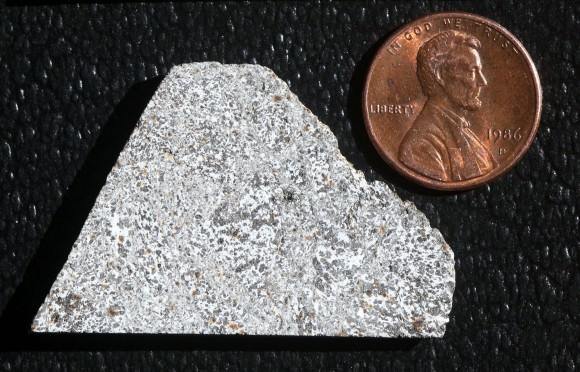
One of the more common forms of asteroid lava found on Earth are the eucrite achondrite meteorites. Many are rich in plagioclase and other pale minerals that are good reflectors of light. Of course, these are all speculations, but the striking contrast of bright and dark certainly piques our curiosity.
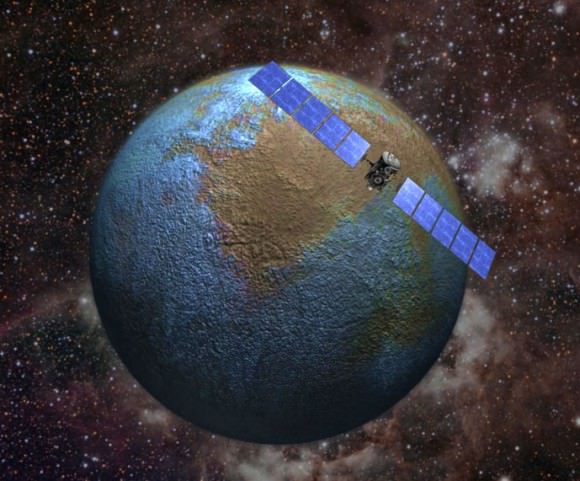
Additional higher resolutions photos streamed back by Dawn show a fascinating array of crater types from small and deep to large and shallow. On icy worlds, ancient impact craters gradually “relax” and lose relief over time, flattening as it were. We’ve seen this on the icy Galilean moons of Jupiter and perhaps the largest impact basins on Ceres are examples of same.
Questions, speculations. Our investigation of any new world seen up close for the first time always begins with questions … and often ends with them, too.

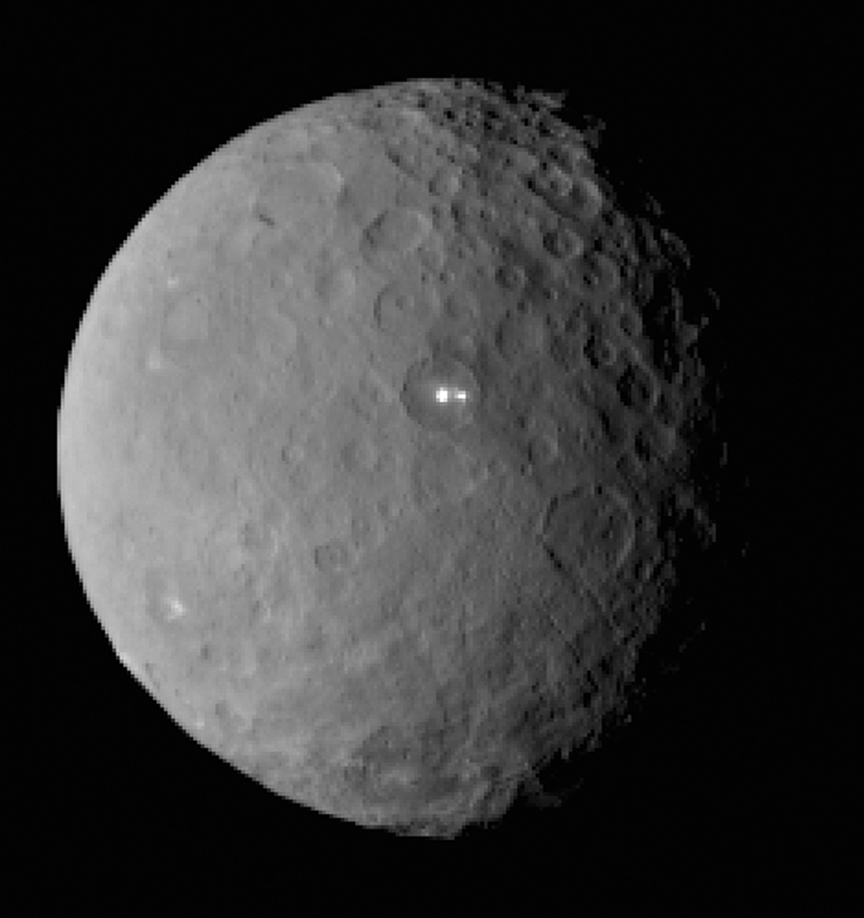
I’m thinking it’s a small city. Size is perhaps in the range of 30-40 thousand people (if we can call them that).
Beckler,
So it’s light pollution then. I should have thought of that. It’s inescapable 😉
Bob you wrote “our view of Ceres and its enigmatic “twin glows” will become increasingly clear in just a matter of days now.”.
No , not exactly , and more precisely in a matter of weeks . Because Dawn was at its nearest distance from Ceres the 23 , I think. She keeps on moving and will be captured by the gravity of Ceres on March 6 but farther away.
If you go to the blog of the good doctor Rayman inside the Nasa site you will find 2 pictures of the trajectory explaining that.
There’s been one more set of images taken, on the 25th, in which Ceres is a little closer but only half illuminated. We will probably get those in the next few days.
galacsi,
I naturally assumed that by March 6th (matter of days) when it entered orbit, the spacecraft would be closer to its target. Thank you very much for alerting me to this. I’ve since added an update.
Is there an article or paper on HOW they sense the extremely weak gravity of a comet, so as to accomplish (I think it’s called) an orbital insertion? What was the sensor, the name of it, that was used to measure the gravity of, say, Comet 67P?
—
Until 67P flares up nearing August, the Dawn encounter with Ceres should keep me interested, in space-happ’nins… Thanks for the article, Bob!! (But, I’m really interested in the Juno mission.) – Anyhoo, the sensor? What’s it called?
There is no “gravity sensor” instrument as such. The gravity of a small object like an asteroid or comet is determined by measuring the influence it has on the spacecraft’s trajectory. If you have a decent initial estimate, based on the object’s known size and an educated guess of its density, you can usually plan your course well enough for orbital capture. As you approach the comet or asteroid, you can refine your estimate of its mass by the difference in the spaceship’s position and your prior prediction.
Until 67P flares up nearing August, the Dawn encounter with Ceres should keep me interested, in space-happ’nins
*cough*howcouldyouforgetnewhorizons*cough*
Truck Stops… a network of interplanetary truck stops, and what we see are the neon signs 😉
So it’s clear, that some one has beaten us
Bob, Great topic again and thank you for confirming my guess that I published the last time you wrote about Ceres when others insisted there was no ice below its dusty surface 🙂
Sure UFOsMom! And thanks mewo for taking on and deftly answering Plenum’s question.
The bright spot? That’s easy.
It’s obvious that Ceres has it’s own propulsion and is trying to get away from our probe.
Thank you, mewo, for explaining that we don’t have or need gravity sensors. Well done.
More importantly – we (humans) have NO IDEA how to build a sensor that will detect gravitational potential directly. If we could measure it, we could start to figure out how to manipulate it!
might be liquid filled crater with 2 reflections,
– center on surface of the liquid and
– the off-set from the bottom of the crater.
Although, truckstop sounds fine by me too.
Landing lights? 8^)
When first seen it was one bright spot. Now we are closer it is two bright spots. Who’s betting that as we get closer these will resolve into a whole field of bright boulders or outcrops.
Also note that there are other bright spots on Ceres. The one causing all the recent fuss just happens to be the brightest one and thus presumably the one due to the most recent impact event.
No wooo wooo factor required. As usual.
Cheers!
Perhaps similar to what can be seen on Phobos, courtesy of JPL/NASA/MRO images from Apr-9-2008
https://imgur.com/a/DITyD#0
http://photojournal.jpl.nasa.gov/target/phobos
http://www.ustream.tv/recorded/59452133
And there’s a picture with the bright spots at the terminator and they clearly stand high.